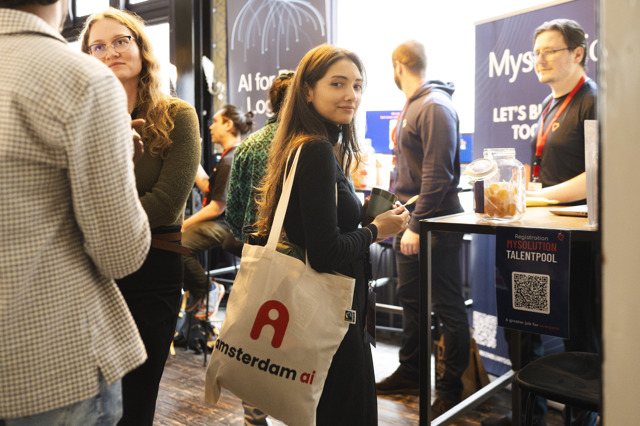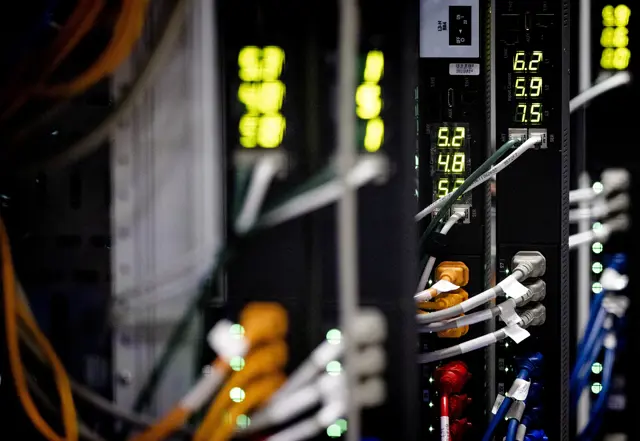< Back to news
Medical images are mainly captured in the hospitals, using expensive imaging devices such as CT or MRI-scanners. Specialists are required operate these devices as well as analyse their output. "Our aim is to use artificial intelligence to develop technologies that allow the use of affordable and/or portable devices such as ultrasound and ultra-low-field MRI," says Amsterdam UMC Professor of Artificial Intelligence and Medical Imaging Ivana Išgum. Išgum is the coordinator of the national consortium implementing the AI4AI project. "Also, our aim is to allow the use of imaging devices by e.g. general practitioners, sonographers and specialist nurses to reduce the need for very highly specialized experts." 


18 December 2023
Amsterdam UMC to use AI to increase the accessibility of medical imaging technology
The demand for acquiring and interpreting medical images is increasing faster than number of medical experts required to operate the medical imaging device and interpret their output. This is leading to an increase in the expert workload and extending waiting lists.
An Amsterdam UMC-led consortium wants to tackle this problem by making imaging technology more accessible. With the help of artificial intelligence, they want to enable less specialized experts to acquire and analyse medical images. To support them in this goal, the Dutch Research Council (NWO) has awarded the AI4AI project a grant of 6.1 million euros.
Medical images are mainly captured in the hospitals, using expensive imaging devices such as CT or MRI-scanners. Specialists are required operate these devices as well as analyse their output. "Our aim is to use artificial intelligence to develop technologies that allow the use of affordable and/or portable devices such as ultrasound and ultra-low-field MRI," says Amsterdam UMC Professor of Artificial Intelligence and Medical Imaging Ivana Išgum. Išgum is the coordinator of the national consortium implementing the AI4AI project. "Also, our aim is to allow the use of imaging devices by e.g. general practitioners, sonographers and specialist nurses to reduce the need for very highly specialized experts."
Less pressure on staff
AI technology can reduce the need for highly specialized experts for operation of medical devices and analysis of medical images, which has the potential to greatly reduce the pressure on personnel and the associated costs" says Išgum, who together with Professor Clarisa Sánchez, leads the interfaculty research group qurAI that focuses on the responsible development of AI in healthcare.
Shortening waiting lists
The increased demand for medical images means that the workload for radiologists and other specialists is increasing enormously. This can lead to burnout symptoms, which in turn affects both the sustainability of care and waiting lists. This means that patients might need to travel further to receive the necessary care. "With this project, we want to contribute to bringing medical imaging closer to patients’ living environment and make it more accessible for patients. In addition, hospital care in developing countries may not always be accessible to everyone. There may also be fewer highly skilled experts available. We also hope to contribute to more accessible healthcare for people in these countries," says Išgum.
Amsterdam UMC Radiologist Nils Planken adds that many fellow radiologists and other medical specialists welcome the support of technology. "AI technology that can support the creation, interpretation and reporting of medical imaging studies has the potential to shorten waiting lists and reduce workload and perhaps also improve quality. The correct use of diagnostics outside the hospital has the potential to prevent patients from being sent to the hospital, or to sending patients to the hospital in an even more targeted way," says Planken.
Applications
AI4AI focuses on many diseases and specialties, such as analysis of stroke and brain tumours, visualization and interpretation of organ tissue perfusion in surgery, quantification of foetal biomarkers to spot abnormalities in the pregnancy, identification of patients requiring invasive coronary artery treatment, identification of patients with heart disease, improvement of the workflow in image-guided radiotherapy, referrals for urgent care, screening and triage of threatening visual disorders, selection of patients eligible for immunotherapy, and improvement of imaging workflow to assess orthopaedic implants.
This article was published on the website of Amsterdam UMC.
© Amsterdam UMC
Vergelijkbaar >
Similar news items

28 April 2025
AI020 Conference Brings Together 400+ AI Experts in Amsterdam
On April 17, AI020 brought together over 400 AI researchers, professionals, and students in Amsterdam for a full day of keynotes, workshops, and startup showcases highlighting the latest in applied and responsible AI.
read more >

April 27, 2025
Watchdog raises alarm: act now to stop your Instagram photos from being used for AI
Privacy watchdogs urge Instagram and Facebook users to object to the use of their photos and posts for AI training.
read more >

April 27, 2025
Amsterdam struggles with future of data centers and digital ambitions
A divided message from Amsterdam’s city council: while one alderman welcomes the tech sector, another blocks the growth of data centers.
read more >